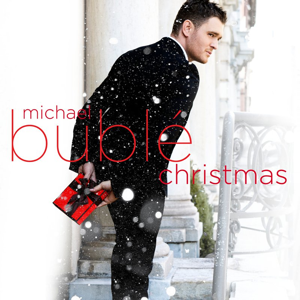December 12, 2022 by Peter Brueggemann (’25)
Christmas, Michael Bublé’s seventh studio album was a 2011 chart topping hit that remains one of the most iconic holiday records ever made. This amalgamation of re-recorded classics and newer hits, joined by one original song, held the Billboard Hot 100 no. 1 place for five weeks. Much of the record’s appeal can be attributed to the singer’s rich and smooth voice that complements the different takes on well-known songs.
“It’s Beginning to Look a Lot Like Christmas” is the opening track and a definite highlight for me. The opening piano chords and first couple of words never fail to give me such a warm and cozy feeling. While it’s similar to Bing Crosby’s original recording, the mellow and slower tone was a great direction to take the song in.

The first of three songs with a feature are a bit of a disappointment. “Jingle Bells (feat. the Puppini Sisters)” is a fast paced take on the classic with the same name. The Puppini Sisters seem to only be there to repeat some of Bublé’s lyrics but don’t improve the song at all. However, the second feature, “White Christmas (with Shania Twain)”, completely redeems the former. The country-pop star gets her own verse and shares one with Bublé. Their two iconic voices sound exquisite together.
Other standouts are “Silent Night” and “Have Yourself a Merry Little Christmas”. They do not depart from their originals by a great margin, but both reaffirm the singer’s true talent and angelic voice. That alone makes them some of my favorite renditions. The original track “Cold December Night” could easily poorly stick out among the other beloved songs, but it does quite the opposite. Its uniqueness and fresh sound complement and greatly benefit the record.
“Ave Maria” may seem like an odd choice as one of the last tracks due to its operatic tone and lack of Christmas references. However, it quickly grew on me. Its gentle sound provides a nice quiet moment before the slightly upbeat finale. This brings us to the closing track, “Mis Deseos / Feliz Navidad (with Thalia)”, an even more confusing pick. With Michael speaking Spanish, a Latin Pop star feature, and a well-known hit combined with an underground Spanish tune, this song becomes more baffling on every listen. This could all be overlooked if it was an epic finish to the record, but the cover dials down the fun original song for no apparent reason. This is not to say I don’t like the sound of it, but it goes off in a completely different direction from the other tracks, making it a very weird finish to such a sonically cohesive album.
Overall, Bublé’s collection of Christmas songs makes a mostly connected yet varied track list, in which the artist’s voice takes center stage. I’m sure many people play this album when decorating trees or enjoying a mug of hot cocoa as the winter snow falls but if you don’t already, I highly recommend.
